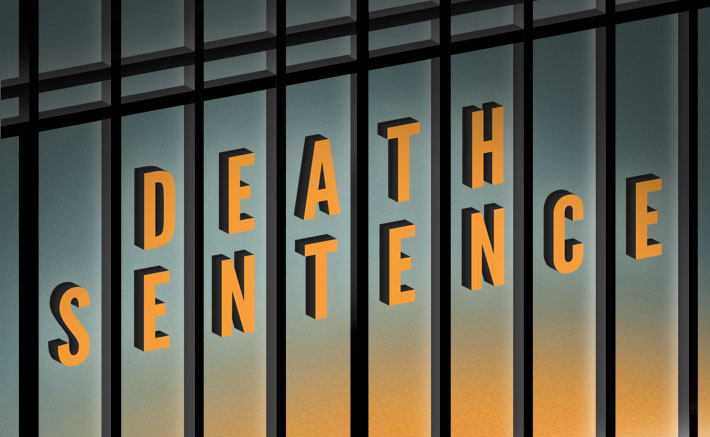
Darryl Woody was booked at Nassau County jail last Christmas. He had been arrested the night before, pleading not guilty to domestic violence charges.
In the early morning hours of Dec. 26, 2010, the 44-year-old pulled a piece of metal from the smoke detector in his cell and began stabbing himself repeatedly in the neck and wrists.
The corrections officer guarding the overnight tour commanded him to stop.
Woody, of Hempstead, who reportedly was bipolar and schizophrenic and unable to make the $30,000 bail or $60,000 bond, had stripped nude from his suicide-prevention gown—made of material incapable of forming a noose. Ignoring the orders, he continued to stab himself about the face and neck.
Another officer arrived to assist. The two guards shouted for Woody to drop the weapon and stop injuring himself. Through the cell door’s meal hatch they fired a one-second burst of pepper spray into his face.
No effect.
A sergeant that had also just arrived on the scene ordered Woody to put down the piece of metal. He continued to slash his face. The officers fired a second blast of pepper spray; still no effect. Another.
A fourth officer arrived to help. Woody ran to the back of his cell as the guards burst in.
“I told them when I came in I needed my medication, and they didn’t give it to me!” he cried out, his voice echoing through the cell block as he was taken to a shower for decontamination. “I did this to get my meds, I’m sorry, but I need them!”
Ten days later—a year ago this Jan. 3—Woody hanged himself with a bed sheet anchored to medical equipment while on suicide watch at the now-defunct prison ward in neighboring Nassau University Medical Center in East Meadow. Those and other details, many blackened out, were documented in routine New York State Commission on Correction investigative reports on such deaths, obtained by the Press via Freedom of Information Law requests.

Page five of a 13-page state report on the death of Darryl Woody, which is about 50-percent redacted. The only line legible reads: “This represents grossly negligent psychiatric care and gross incompetence on the part of the jail/NUMC. (Photos by Ethan Stokes/Long Island Press)
Woody is not alone. Before him, three other inmates committed suicide at the jail in 2010—the first a year prior to the day of Woody’s demise—matching the number of suicides at Erie County jail in Buffalo; both counties individually comprising one-third of all jailhouse suicides in the state that year, according to the state Division of Criminal Justice Services.
To be clear: Those numbers strictly pertain to jails, not prisons. Jail inmates include those awaiting trial—innocent until proven guilty, but unable to make bail—and those serving misdemeanor sentences of a year or less, as opposed to prisoners, who serve lengthier sentences in upstate penitentiaries—such as Ossining’s Sing Sing or Clinton Correctional in Dannemora—for serious felonies.
In the months following the four deaths, Nassau privatized health care at the jail, inmate advocates began calling for a legally required local oversight board and Sheriff Michael Sposato tightened proverbial belts amid a 3-percent cut in the county jail’s $146 million budget. The guards’ union warns such cuts could worsen conditions at a Long Island jail already described as “the worst” by violent felons who’ve spent years in maximum-security upstate New York prisons.
“If history is to repeat itself,” John Jaronczyk, incoming president of the Sheriffs Officers Association—the 1,032 guards’ union—told the county legislature Oct. 12, “there will likely be an increase in inmate lawsuits against the county claiming unsafe conditions and the department’s failure to protect them, increase in injuries to both inmates and officers alike, increased amounts of uses of force by staff brought on by violent criminals who are angry with their unsafe conditions and increased limitations of their incarceration.”
Harsh words for a place where the bad old days at the jail ended in just 2005, when federal oversight following the 1999 beating death of an inmate stopped. Four corrections officers were sentenced to prison in that case.
Of course, no one expects spending time in the Gray Bar Hotel to be as whimsical as when fictional evil wizard Gargamel escapes in scenes shot there for the 2011 movie, The Smurfs.
“The fact is, if someone is intent on taking their life, there’s very little you can do,” County Executive Ed Mangano told a reporters’ roundtable when asked about the deaths three months after Woody’s suicide. That’s why there are strict legal guidelines regulating suicide questionnaires upon inmate intake, and guards carry a special knife called a “cut-down tool” to quickly saw through makeshift bed-sheet nooses.
Despite these and other concerns, Nassau’s inmate population is actually growing, thanks to the county’s fiscal crisis. The jail this year got the OK to rent cells to Suffolk and federal authorities short on space for inmates—one of the ways Nassau hopes to close its projected $310 million budget gap. About 1,500 inmates are estimated to be held at the jail on any given day, depending upon the ebb and flow of the criminal justice system.
Inmate advocates, civil rights proponents and sheriffs’ union officials warn the situation in Nassau jail will likely get much, much worse before getting any better.







